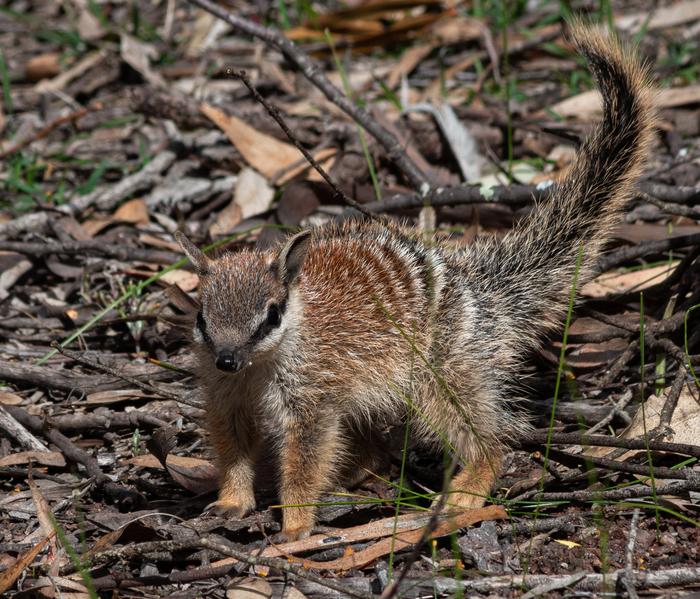Curtin University research using thermal imaging of numbats in Western Australia has found that during hot weather the endangered animals are limited to as little as ten minutes of activity in the sun before they overheat to a body temperature of greater than 40°C.

Credit: Curtin University
Curtin University research using thermal imaging of numbats in Western Australia has found that during hot weather the endangered animals are limited to as little as ten minutes of activity in the sun before they overheat to a body temperature of greater than 40°C.
Lead author Dr Christine Cooper, from Curtin’s School of Molecular and Life Sciences, said despite using techniques such as raising or flattening their fur to regulate body temperature, numbats were prone to overheating, which was an important consideration for future conservation efforts, particularly given our warming climate.
“Active only during the day and with an exclusive diet of termites, numbats are often exposed to high temperatures and gain heat from direct sunlight. Even when in the shade they gain heat from radiation from the ground, rocks and trees,” Dr Cooper said.
“We found when it is cold, numbats keep warm by raising their fur to provide better insulation and to allow more radiation to penetrate. When it is hot, they depress their fur to facilitate heat loss and shield the skin from solar radiation. In this way their body functions as a thermal window that allows heat exchange.
“The numbats’ distinctive stripes do not have a role in heat balance, rather their most likely function is for camouflage.”
Dr Cooper said numbats used to be found across southern Australia but were now restricted to two remaining natural populations at Dryandra Woodland, near Narrogin, where the study was done, and Perup Nature Reserve, near Manjimup, with some additional re-introduced populations.
“With an estimated population of only about 2000, numbats are under threat from habitat loss and introduced predators like foxes and feral cats,” Dr Cooper said.
“In terms of habitat requirements, our findings show the importance of considering temperature and shade availability when planning translocations for the conservation of this endangered species, particularly given our warming climate.
“Even with shade available, higher temperatures will reduce how long numbats can forage during the day, and because they have limited capacity to become more nocturnal, heat may become problematic for numbats.
“Understanding how the numbat responds to and manages heat is essential to understanding its ecology and has particular relevance for the future conservation and management of the species in the face of global warming.”
Published in Journal of Experimental Biology, the research is titled ‘Implications of heat exchange for a free-living endangered marsupial determined by non-invasive thermal imaging’.
Journal
Journal of Experimental Biology
Method of Research
Observational study
Subject of Research
Animals
Article Title
Implications of heat exchange for a free-living endangered marsupial determined by non-invasive thermal imaging’
Article Publication Date
11-Jan-2024




